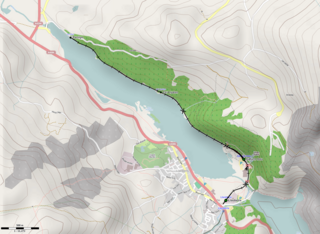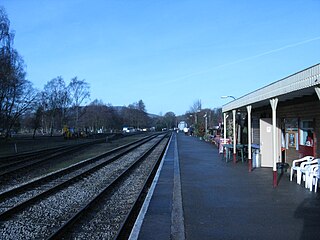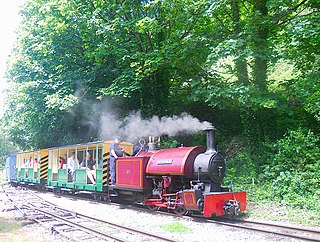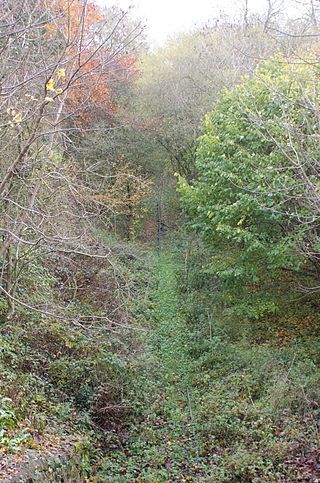Contents
Derbyshire Dales Narrow Gauge Railway | ||||||||||||||||||||||||||||||||||||||||||||||||||||||||||||||||||||||||||||||||||||||||
|---|---|---|---|---|---|---|---|---|---|---|---|---|---|---|---|---|---|---|---|---|---|---|---|---|---|---|---|---|---|---|---|---|---|---|---|---|---|---|---|---|---|---|---|---|---|---|---|---|---|---|---|---|---|---|---|---|---|---|---|---|---|---|---|---|---|---|---|---|---|---|---|---|---|---|---|---|---|---|---|---|---|---|---|---|---|---|---|---|
| ||||||||||||||||||||||||||||||||||||||||||||||||||||||||||||||||||||||||||||||||||||||||
The Derbyshire Dales Narrow Gauge Railway (DDNGR) was a short, 2 ft (610 mm) narrow-gauge railway located at Rowsley South [1] at Peak Rail. It operated ex-industrial diesel locomotives and carriages.
Derbyshire Dales Narrow Gauge Railway | ||||||||||||||||||||||||||||||||||||||||||||||||||||||||||||||||||||||||||||||||||||||||
|---|---|---|---|---|---|---|---|---|---|---|---|---|---|---|---|---|---|---|---|---|---|---|---|---|---|---|---|---|---|---|---|---|---|---|---|---|---|---|---|---|---|---|---|---|---|---|---|---|---|---|---|---|---|---|---|---|---|---|---|---|---|---|---|---|---|---|---|---|---|---|---|---|---|---|---|---|---|---|---|---|---|---|---|---|---|---|---|---|
| ||||||||||||||||||||||||||||||||||||||||||||||||||||||||||||||||||||||||||||||||||||||||
The Derbyshire Dales Narrow Gauge Railway (DDNGR) was a short, 2 ft (610 mm) narrow-gauge railway located at Rowsley South [1] at Peak Rail. It operated ex-industrial diesel locomotives and carriages.
The DDNGR was established by Henry and Mary Frampton-Jones at Rowsley South during the 1990s. [2] They had accumulated a collection of narrow-gauge rolling stock at various other railways and needed a running line. At Rowsley South the area behind the turntable was found to be suitable and work started on clearing and laying the track. 1998 saw the arrival of the first items of rolling stock, and the two 40-foot containers used as engine sheds.
In 2001 the Derbyshire Dales Narrow Gauge Supporters Group formed to support the narrow-gauge operation.
Initially, the main running line ran from Nannygoat crossing, through Parkside Station, across a level crossing to a buffer stop beyond where the containers were positioned. A loop was created at Parkside and various sidings laid to access the containers. Top and tail operation was the norm, with a locomotive formed either side of the carriages.
HMRI approval was gained for operations in 2004, and the first DDNGR passengers were carried on Easter Sunday, 11 April 2004. The railway operated on 44 days (mostly Sundays) and carried approximately 1,400 passengers in 2009.[ citation needed ]
During 2018 - 2019 the track was lifted and stock sold. The site is now being developed by the Ashover Light Railway Society.
All are 2 ft (610 mm), although some were built/rebuilt to different gauges. [3]
| Builder | Works Number | Build Year | Details | Image |
|---|---|---|---|---|
| Motor Rail | 435 3663 | 1917 rebuilt 1924 | 40HP Simplex 4wDM. Built for the First World War battlefield supply lines as WD 2156. Originally fully open, but later fitted with the armour protection. Rebuilt in 1924 by Motor Rail 3663 and re-gauged to 2 ft 6 in (762 mm) and sent to St Kitts. Later brought back from Antigua and re-gauged back to 2 ft (610 mm). [4] | |
| Motor Rail | 4572 | 1929 | ex-Birmingham and Rea District Drainage Board (Water Orton) [2] | |
| Motor Rail | 5853 | 1934 | Initially hired out to Merton Eng Co Ltd, Feltham via Petrol Loco Hirers Ltd (a Motor Rail subsidiary) and sold to them on 23 May 1934. It changed hands before eventually being acquired by Rev E R (Teddy) Boston at the Cadeby Light Railway in 1964. It was sold to Pete Wood in 1974. [4] | |
| Motor Rail | 8756 | 1942 | ex-Joseph Arnold and Sons Ltd Silica Sand Quarries, Leighton Buzzard [2] | |
| Ruston & Hornsby | 393325 | 1952 | ex-BR 85049, previously used at Chesterton Junction permanent way depot near Cambridge [2] Now based at the Mountsorrel and Rothley Community Heritage Centre | |
| Ruston & Hornsby | 404967 | 1957 | ex-BR 85051, previously used at Chesterton Junction permanent way depot near Cambridge [2] Now owned by the Ashover Light Railway Society |  |
| Motor Rail | 22070 | 1960 | From the London Brick Co.'s Kempston Works, Bedfordshire [2] | |
| Ruston & Hornsby | 487963 | 1963 | 4wDM, ex-Butlins, Minehead and Stanley Gravel Pits, Wakefield [2] | |
| Hunslet | 8917 | 1980 | ex Linby Colliery (Nottingham) and Sutton Manor Colliery (Lancashire). Flameproof 4wDHF. [2] Now owned by the Ashover Light Railway Society |

Rail transport in Ireland is provided by Iarnród Éireann in the Republic of Ireland and by Northern Ireland Railways in Northern Ireland.

The Ecclesbourne Valley Railway is a 9-mile (14.5 km) long heritage railway in Derbyshire. The headquarters of the railway centre on Wirksworth station, and services operate in both directions between Wirksworth and Duffield and from Wirksworth to Ravenstor.

The Ashover Light Railway was a 1 ft 11+1⁄2 in narrow gauge railway in Derbyshire, England that connected Clay Cross and Ashover. It was built by the Clay Cross Company to transport minerals such as limestone, fluorite, barytes and gritstone to its works at Clay Cross and for transport around the country by the LMS.

The Midland Railway – Butterley is a heritage railway and museum complex at Butterley, near Ripley in Derbyshire.

The West Lancashire Light Railway (WLLR) is a 2 ft narrow gauge railway that operates at Hesketh Bank, situated between Preston and Southport in North West England. The distance between the stations on the railway is 430 yards (393 m), though track extends eastwards beyond Delph station on ledge above the old clay pit which is too narrow to contain a run round loop. An extension of up to 435 metres (1,427 ft), running along the north bank of the fishing lake has been proposed. The railway has seven steam locomotives, three of which are in operating condition; two are currently being rebuilt and another is on static display. There are also two electric locomotives and many IC locomotives.

The Steeple Grange Light Railway is a narrow-gauge heritage railway visitor attraction near Wirksworth in Derbyshire, England. Opened in 1985 on the trackbed of a disused branch line, it uses industrial locomotives and rolling stock from disused mines, quarries, and steelworks around the country.

The Llanberis Lake Railway is a 1 ft 11+1⁄2 in narrow gauge heritage railway that runs for 2.5 miles (4 km) along the northern shore of Llyn Padarn in north Wales in the Snowdonia National Park. The starting point is the village of Llanberis at the eastern end of the lake, with the western terminus at Pen Llyn in the Padarn Country Park. The return journey takes around 60 minutes.

The Victorian Railways (VR), trading from 1974 as VicRail, was the state-owned operator of most rail transport in the Australian state of Victoria from 1859 to 1983. The first railways in Victoria were private companies, but when these companies failed or defaulted, the Victorian Railways was established to take over their operations. Most of the lines operated by the Victorian Railways were of 5 ft 3 in. However, the railways also operated up to five 2 ft 6 in narrow gauge lines between 1898 and 1962, and a 4 ft 8+1⁄2 instandard gauge line between Albury and Melbourne from 1961.

The Abbey Light Railway was a 2 ft narrow gauge railway in Kirkstall, Leeds, West Yorkshire, England. Built by enthusiasts, the Railway ran from the nearby Bridge Road commercial area into the grounds of Kirkstall Abbey, operating most Sundays.

Bangladesh Railway is the state-owned rail transport agency of Bangladesh. It operates and maintains all railways in the country, and is overseen by the Directorate General of Bangladesh Railway. The Bangladesh Railway is governed by the Ministry of Railways and the Bangladesh Railway Authority. Its reporting mark is "BR".

The narrow-gauge railways in Saxony were once the largest single-operator narrow-gauge railway network in Germany. In Saxony, the network peaked shortly after World War I with over 500 km (311 mi) of tracks. At first, it was primarily created to connect the small towns and villages in Saxony – which had formed a viable industry in the 19th century – to already established standard-gauge railways. But even shortly after 1900, some of the railways would become important for tourism in the area.

The Kalka–Shimla Railway is a 2 ft 6 in narrow-gauge railway in North India which traverses a mostly mountainous route from Kalka to Shimla. It is known for dramatic views of the hills and surrounding villages. The railway was built under the direction of Herbert Septimus Harington between 1898 and 1903 to connect Shimla, the summer capital of India during the British Raj, with the rest of the Indian rail system.

The rail network in Queensland, Australia, was the first in the world to adopt 1,067 mm narrow gauge for a main line, and now the second largest narrow gauge network in the world, consists of:

The Heart of Dixie Railroad Museum is the official state railroad museum of Alabama. Dedicated to the preservation, restoration, and operation of historically significant railway equipment, the museum is located at 1919 Ninth Street, Calera, Alabama, on I-65 approximately 30 miles (48 km) south of Birmingham.

Rowsley South railway station lies approximately a mile short of Rowsley village, the location of the settlement's previous stations. Rowsley South was the third station to be built in the area, constructed by Peak Rail volunteers in the late 1990s.
The railcar couplers or couplings listed, described, and depicted below are used worldwide on legacy and modern railways. Compatible and similar designs are frequently referred to using widely differing make, brand, regional or nick names, which can make describing standard or typical designs confusing. Dimensions and ratings noted in these articles are usually of nominal or typical components and systems, though standards and practices also vary widely with railway, region, and era. Transition between incompatible coupler types may be accomplished using dual couplings, a coupling adapter or a barrier wagon.

The Amberley Museum Railway is a 2 ft narrow gauge railway based at Amberley Museum, Amberley, West Sussex. It has a varied collection of engines and rolling stock ranging from 18 in gauge to 5 ft 3 in gauge. It operates passenger trains at the museum using a mixture of steam, internal combustion and battery-electric locomotives.
Parkside railway station was the only station on the Derbyshire Dales Narrow Gauge Railway. Derbyshire Dales Narrow Gauge Railway was a short narrow-gauge railway operating at Rowsley South, and operated ex-industrial diesels and carriages similar to the Golden Valley light railway at the Midland Railway Centre.

The Bromyard and Linton Light Railway is a 1-mile (1.6 km) single track, 2 ft narrow gauge railway line that runs between Bromyard and the Linton Industrial Estate, just off the A44. The track is laid on the bed of the old BR Worcester, Bromyard and Leominster Railway line. The track runs from an old depot, close to the site of the old Bromyard station, and ends under a bridge near a hospital turned flat block. The bridge was constructed in 1877 and carries a lane. There are disused engines in sheds at the main depot and Linton depot. The present track was used for the disused sandstone quarry.
The Brockham Railway Museum was a 2 ft narrow gauge railway based at the site of the Brockham Limeworks, near Dorking, Surrey. When it closed in 1982, the majority of the collection was moved to the Amberley Museum & Heritage Centre where it formed the nucleus of the Amberley Museum Railway.